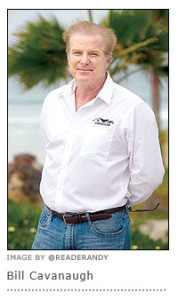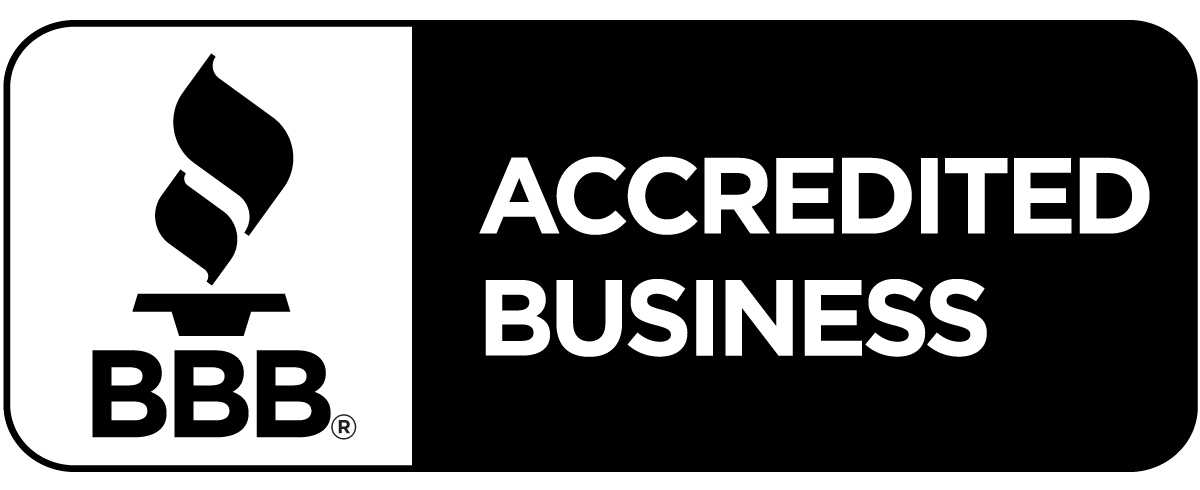We Build and Sell ACCESSORY DWELLING UNITS that are built to Federal and Local Code only!
Some Tiny Homes as seen on TV are actually Park Model RV’ and less than 400 sq ft , built to an RV code and are NOT allowed as full time residence on the majority of properties in California.
We do not sell these units.
Bill Cavanaugh of USModular, Inc. was recently featured in the San Diego Reader.
To get a home builder’s perspective, I spoke with Bill Cavanaugh, whose company, US Modular, builds manufactured homes, including the small variety. Cavanaugh, who lives in Carlsbad, tells me about a tiny-house village in the works.
- Bill Cavanaugh of USModular, Inc.
Right now, I’m looking at a six-acre parcel in East County. We’re planning to build 90 under-400-square-foot homes that will cost $40k apiece. There will be very small yards, common meeting hall, possibly a pool. My vision is of a healthy senior who wants to be independent but also wants a sense of community, instead of grandma living in the home where she’s lived for 30 years and has a hard time getting up and down the stairs. There will 90 people all in similar situations. Every night, there’s bingo and a potluck supper goin’ on. You know your neighbors, but it’s not like an apartment where you can hear your neighbor snore. You have four walls, a bedroom, a bathroom, a little tiny kitchen, a place for TV and a porch….
“But there are infrastructure hurdles. If I do it the traditional build way, it could be cost prohibitive. For example, if I have to bring in water meters for each unit versus shared, it just gets to the point where it defeats the purpose of what I’m trying to do. I’m negotiating with agencies so I can provide affordable housing for the market I’m going for, but if I have to spend $60,000 on infrastructure costs, I’ll end up with a $150,000 400-square-foot house.
What will East County oldsters get for $40,000?
“When you get down to that price point, it’s a pretty basic, bare bones, entry-level house, and it’s gonna look it. A simple roof, a little porch, maybe, simple flooring.”
Cavanaugh says that most of his inquiries are for “granny flats,” accessory units in backyards.
“What can we do to bring somebody home? The term I use is ‘multigenerational.’ The numbers are staggering: something like 50 to 60 million families in America are living in a multigenerational situation — more so than ever before. That’s either Grandma movin’ back in with the family or the college kid who can’t afford to live on his own. People are starting to realize that it doesn’t make sense to go out there and try to live on your own when you can do it for a fraction of the cost on an existing property. It doesn’t matter what you call it; you still have independent living and your own private space, taking advantage of infrastructure in place.”
The US Modular website has models ranging down to as small as “Cottage Series 300.” “I can build smaller than that,” says Cavanaugh, “but then you’re really building a shed. I can put a model like that in someone’s backyard, but it has to be attached to a permanent foundation. As far as the upper end of what you can build as a secondary unit, city codes limit you to 600 to 750 square feet.”
Cavanaugh, who says he built a half dozen small houses in 2014, predicts that 30 percent of his business will be in granny flats.
“I’ve built around a hundred in total, and just did a 900-square-foot house in Vista, but nothing really tiny.”
Cavanaugh opines that if tiny-home clusters have a future in San Diego County, it’s going to be on the outskirts.
“Fallbrook, Escondido, places where there’s more land. You’re not going to find opportunities for tiny-home villages in San Diego proper because everything’s built up and raw land is hard to find.”
Cost?
“From start to finish, a 657-square-foot house, for example, runs in the $100,000 range with permitting, or about $150 per square foot. When you start building smaller homes, cost per square foot goes up because you have to amortize things like septic, sewer fees etc. when you’re building to a modular code, which is same as site-built code. But if I were to build down to a HUD code [used for mobile homes] that’s a lower code; it has a steel chassis underneath. You can build that on a private property as long as there’s a permanent foundation, and I can even build two stories, which brings the cost per square foot down to low 100s.”
What’s the livable minimum?
He laughs, “I guess it all depends how big you are. I was actually surprised looking at some of the 399-square-foot homes, the ‘park models.’ You can build them to be livable because you incorporate the outdoors into your home. You can add a porch for indoor/outdoor living, especially in Southern California, and now you’ve added another 100–200 square feet to your living area.”
Regarding the tiny-house philosophy, Cavanaugh notes, “Although I talk to people who are into that tiny-house movement who say that it frees them up from their worldly possessions, I haven’t run into a lot of people like that. Most people want extra square footage for a family member — the maximum allowable by city code in lieu of adding to the main structure. I’ve watched those TV shows, and that’s a different group, with a mindset where they’re hell bent on living in 400 square feet.”
What motivates someone to live in a tiny home? Affordability is the most frequent spur, although some folks are attracted to the notion that size limitations force one to simplify life by, among other things, shedding possessions. Tied into the latter mindset is the theory, embraced by some, that choosing to “live small” has a salubrious effect on the larger world, presumably by using fewer resources.
“Earline,” an unemployed woman who lives in a 2000-square-foot house in Santee, says she and her husband are planning to live in a 344-square-foot cabin in Big Bear three quarters of the year. However, she admits that, to date, it’s been no more than an occasional get-away, with the longest uninterrupted span lasting two weeks.
“Last year we used it a total of two or three months, but before that, as little as two or three days a year. We bought it in January 1990 for $50,000; the lot is 25´x100´.” She disclaims claustrophobia. “We’ve had as many as 16 people stay there at once, but there’s so much to do outside that when you come home, you’re just thankful to have it.”
A chubby, churlish South Dakotan, she says she plans to live in the mountain cabin year-round, excluding winter. But she waffles about leaving her much larger full-time home.
“We have property in two resort towns, so that’s a hard decision to make.” Ambivalence about forsaking one “resort town” aside, she extols the ostensible virtues of cramped quarters.
“The best thing is that you have to work out your problems, your disagreements, your arguments. You have to solve them. You can’t run away to another room and leave; you’re there. Everything is intensified and you have to make it work. You have nowhere to go so you have to get along.”
What do you do with all your stuff? Do you just decide that you don’t need a lot of things?
Puzzled, seemingly nonplussed, Earline answers, “I don’t know what you mean by ‘lots of stuff.’ We have everything we need. We have a stove, a refrigerator…”
But without a lot of storage space, don’t you have to limit the amount of clothes or other things?
She replies, “Never thought of it that way; we have more than enough.”
But in your case, you have a main house which is much larger.
“No, no,” she protests. “You think differently.”
But once you’re living just in the little house, won’t you have a problem getting rid of things?
“No,” she insists, “you have to think differently. You think differently when you buy food, when you buy furniture, when you buy clothing. It’s a different lifestyle altogether.”
But it’s not for those who collect things, right? Isn’t it difficult to decide what to toss and what to keep?
Earline, who denies being uninterested in possessions, sounds a mantra: “You just keep what’s important. Actually, last summer, I went in and cleared out all the junk from 25 years. It’s amazing, even in that little house, how much junk you can collect. There was so much junk we didn’t need, didn’t want, stored away in cabinets.”
Are there people ill-suited to live in a tiny house?
“I’m sure there are people who can’t live in a big house. When I come home, I walk in, look around, and say to myself, This place is huge. It’s an interesting feeling, hard to describe; I can’t explain it. Then everybody dissipates into their own little rooms.”
She seems conflicted when I ask if she prefers a small environment.
“No, I’m not gonna say that either.”
What about people who have books, records, or other things but are interested in a tiny home? How do they come to terms with living in a very small space?
“I don’t know,” says Earline. “You just keep what’s important to you.”
Mark Silva views the tiny-house movement as part of a larger trend.
“The essence of it is that people are realizing that more isn’t always better, and it’s a backlash against the idea of having to impress everyone else with how much house you have, the McMansion where you spend thousands of dollars on a water bill and electricity every month. I have a lot of clients who are downsizing from 8000-square-foot homes to 2000 square feet. That doesn’t qualify as a tiny house, but it’s a reflection of a fundamental change. The tiny-house thing is an extreme version of that.”
Silva says that the City of San Diego is poised to embrace the trend.
“San Diego is right at the cusp. I just got a draft of the city’s proposed new Small Subdivision Ordinance to allow smaller lot sizes. Lot-size minimums have been a barrier, and if the city is trying to find ways to increase density, this is an opportunity to do that. If you have a standard 100´-by-60´ lot, you’ll now be able to divide that into four lots. With this new ordinance, a housing developer who buys a big piece of property can build more, smaller homes with the same amount of acreage.
Silva notes, “Some TV channel has been watching the trend and is trying to capitalize on it. I’ve seen a couple of episodes, but I don’t know how long people live in or try to live in those 150–200-square-foot houses. I would suspect that there are at least one or two builders who are contemplating erecting them….
“I haven’t had one built yet, but I’ve had a couple of inquiries. I’m considering tearing down my house in Clairemont and building one for my wife and myself and another for my studio, which would serve as a showcase for my small-house designs.”
Although the tiny-house movement has its share of zealots driven by environmental obsessions, Lauren Thomas notes that it’s far from monolithic. However, she concedes, “There are some purists who criticize others for not going to the extremes that they do; for example, living off the grid with a friggin’ composting toilet.”
Advocacy aside, Greg Johnson admits, “People would visit my 10´x7´ house and say, ‘That’s beautiful.’ But then there’d be a pause, and they’d say, “But I don’t think we could live here.’ What I’m interested in now are homes that people can look at and say, “We could actually do that.”
Bill Cavanaugh jokes, “To live in a tiny house, you’ve really gotta love your wife.”
Read the rest of the article: San Diego Reader
Visit http://www.californiatinyhome.com/
Find us on Facebook www.facebook.com/californiatinyhomes




